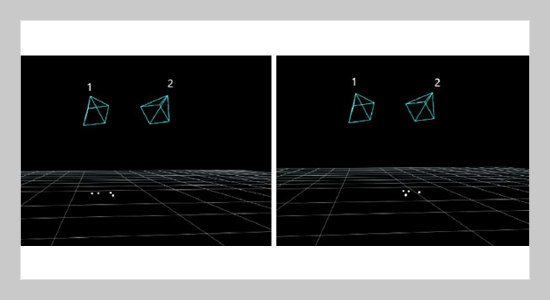REFERENCES
- [1]He, W., Li, Z., Chen, C. L. P. (2017). A survey of human-centered intelligent robots: issues and challenges, IEEE/CAA Journal of Automatica Sinica 4(4), 602- doi: 10.1109/JAS.2017.7510604
- [2]Fu, Q., Chen, X.-Y., He, W. (2019). A survey on 3D visual tracking of multicopters, International Journal of Automation and Computing 16(6), 707- doi: 10.1007/s11633-019-1199-2
- [3]Wang, Y., Wang, R., Wang S., et al. (2019). Underwater bio-inspired propulsion: from inspection to manipulation, IEEE Transactions on Industrial Electronics, early doi: 10.1109/TIE.2019.2944082
- [4]Mariottini, G. L., Oriolo, G., Prattichizzo, D. (2007). Image-based visual servoing for nonholonomic mobile robots using epipolar geometry, IEEE Transactions on Robotics 23(1), 87- doi: 10.1109/TRO.2006.886842
- [5]Zhang, Z. (1998). Determining the epipolar geometry and its uncertainty: a review, International Journal of Computer Vision 27(2), 161- doi: 10.1023/A: 1007941100561
- [6]Cui, X. F., Wang, X. M., Wang, X. (2004). A method of automatically recognizing and matching artificial signs. Computer Engineering and Applications, (21): 79-81. doi:10.3321/j.issn:1002-8331.2004.21.024
- [7]Wang, Z., Yu, Y. L., Zhang, D. (1998). Best neighborhood matching: an information loss restoration technique for block-based image coding systems. IEEE Transactions on Image Processing, 7(7), 1056- doi: 10.1109/83.701166
- [8]Yoon, K. J., Kweon, I. S. (2006). Adaptive support-weight approach for correspondence search. IEEE Transactions on Pattern Analysis and Machine Intelligence, (4), 650- doi: 10.1109/TPAMI.2006.70
- [9]Heo, Y. S., Lee, K. M., Lee, S. U. (2010). Robust stereo matching using adaptive normalized cross-correlation. IEEE Transactions on Pattern Analysis and Machine Intelligence, 33(4), 807- doi: 10.1109/TPAMI.2010.136
- [10]Lin, Q., Yang, R., Zhang, Z., et al. (2018). Robust stereo-match algorithm for infrared markers in image-guided optical tracking system. IEEE Access, 6, 52421- doi: 10.1109/ACCESS.2018.2869433
- [11]Cai, M., Wang, Y., Wang, S., et al. (2019). Prediction-based seabed terrain following control for an underwater vehicle-manipulator system. IEEE Transactions on Systems, Man, and Cybernetics: Systems, early doi: 10.1109/TSMC.2019.2944651
- [12]Vicon Motion Capture Systems, 2019. [Online]. Available: https://www.vicon.com/
- [13]OptiTrack Motion Capture Systems, 2019. [Online]. Available: http://optitrack.com/
- [14]Papadimitriou, D. V., Dennis, T. J. (1996). Epipolar line estimation and rectification for stereo image pairs. IEEE Transactions on Image Processing, 5(4), 672-676. doi: 10.1109/83.491345
- [15]Ramalingam, S., Sturm, P., Lodha, S. K. (2005). Towards complete generic camera calibration. Proc. of IEEE Computer Society Conference on Computer Vision and Pattern Recognition, San Diego, USA, Jun. 20-26, 1093-1098. doi: 10.1109/CVPR.2005.347
- [16]He, W., Dong, Y. (2018). Adaptive fuzzy neural network control for a constrained robot using impedance learning. IEEE Transactions on Neural Networks and Learning Systems, 29(4), 1174-1186. doi: 1109/TNNLS.2017.2665581
- [17]Kannala, J., Brandt, S. S. (2006). A generic camera model and calibration method for conventional, wide-angle, and fish-eye lenses. IEEE Transactions on Pattern Analysis and Machine Intelligence, 28(8), 1335- doi: 10.1109/TPAMI.2006.153
- [18]Hartley, R., Zisserman, A. (2004). Multiple View Geometry in Computer Vision, 2nd ed., Cambridge University Press, Cambridge, 312-313
- [19]Fu, Q., Quan, Q., Cai, K.-Y (2015). Calibration of multiple fish-eye cameras using a wand, IET Computer Vision, 9(3), 378 doi: 10.1049/iet-cvi.2014.0181
- [20]Fu Q. (2019). Efficient fundamental matrix estimation for robotic visual servoing based on continuous-time optimization, Journal of Applied Science and Engineering, 22(1), 179 doi: 10.6180/jase.201903_22(1).0018
- [21]Assa, A., Janabi-Sharifi, F. (2015). Virtual visual servoing for multicamera pose estimation, IEEE/ASME Transactions on Mechatronics, 20(2), 789–798. doi: 10.1109/TMECH.2014.2305916
















